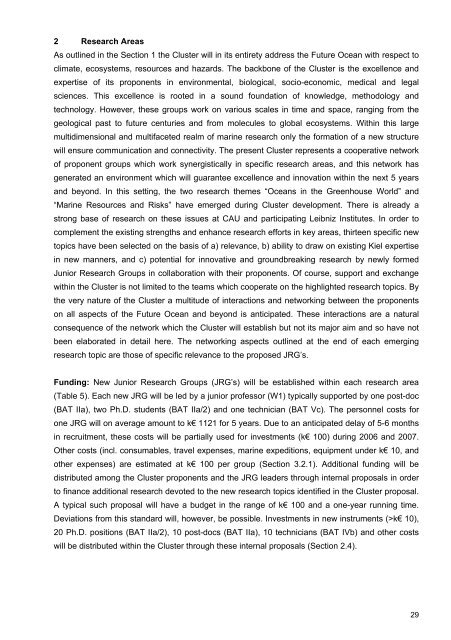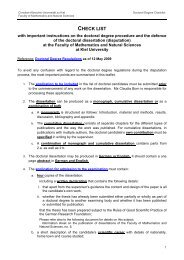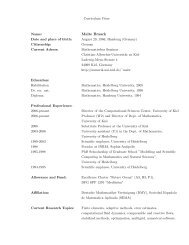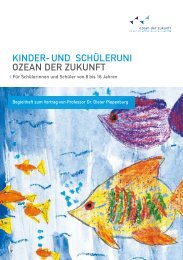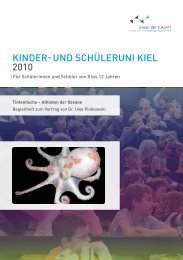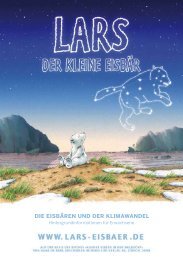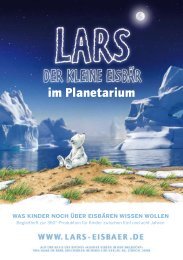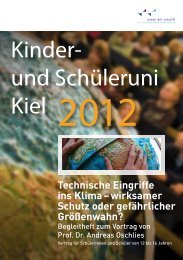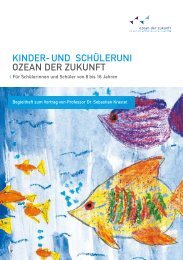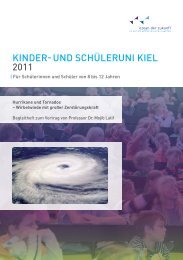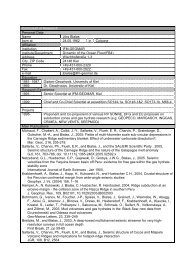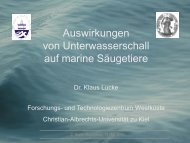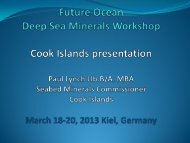Untitled - The Future Ocean
Untitled - The Future Ocean
Untitled - The Future Ocean
- No tags were found...
Create successful ePaper yourself
Turn your PDF publications into a flip-book with our unique Google optimized e-Paper software.
2 Research AreasAs outlined in the Section 1 the Cluster will in its entirety address the <strong>Future</strong> <strong>Ocean</strong> with respect toclimate, ecosystems, resources and hazards. <strong>The</strong> backbone of the Cluster is the excellence andexpertise of its proponents in environmental, biological, socio-economic, medical and legalsciences. This excellence is rooted in a sound foundation of knowledge, methodology andtechnology. However, these groups work on various scales in time and space, ranging from thegeological past to future centuries and from molecules to global ecosystems. Within this largemultidimensional and multifaceted realm of marine research only the formation of a new structurewill ensure communication and connectivity. <strong>The</strong> present Cluster represents a cooperative networkof proponent groups which work synergistically in specific research areas, and this network hasgenerated an environment which will guarantee excellence and innovation within the next 5 yearsand beyond. In this setting, the two research themes “<strong>Ocean</strong>s in the Greenhouse World” and“Marine Resources and Risks” have emerged during Cluster development. <strong>The</strong>re is already astrong base of research on these issues at CAU and participating Leibniz Institutes. In order tocomplement the existing strengths and enhance research efforts in key areas, thirteen specific newtopics have been selected on the basis of a) relevance, b) ability to draw on existing Kiel expertisein new manners, and c) potential for innovative and groundbreaking research by newly formedJunior Research Groups in collaboration with their proponents. Of course, support and exchangewithin the Cluster is not limited to the teams which cooperate on the highlighted research topics. Bythe very nature of the Cluster a multitude of interactions and networking between the proponentson all aspects of the <strong>Future</strong> <strong>Ocean</strong> and beyond is anticipated. <strong>The</strong>se interactions are a naturalconsequence of the network which the Cluster will establish but not its major aim and so have notbeen elaborated in detail here. <strong>The</strong> networking aspects outlined at the end of each emergingresearch topic are those of specific relevance to the proposed JRG’s.Funding: New Junior Research Groups (JRG’s) will be established within each research area(Table 5). Each new JRG will be led by a junior professor (W1) typically supported by one post-doc(BAT IIa), two Ph.D. students (BAT IIa/2) and one technician (BAT Vc). <strong>The</strong> personnel costs forone JRG will on average amount to k€ 1121 for 5 years. Due to an anticipated delay of 5-6 monthsin recruitment, these costs will be partially used for investments (k€ 100) during 2006 and 2007.Other costs (incl. consumables, travel expenses, marine expeditions, equipment under k€ 10, andother expenses) are estimated at k€ 100 per group (Section 3.2.1). Additional funding will bedistributed among the Cluster proponents and the JRG leaders through internal proposals in orderto finance additional research devoted to the new research topics identified in the Cluster proposal.A typical such proposal will have a budget in the range of k€ 100 and a one-year running time.Deviations from this standard will, however, be possible. Investments in new instruments (>k€ 10),20 Ph.D. positions (BAT IIa/2), 10 post-docs (BAT IIa), 10 technicians (BAT IVb) and other costswill be distributed within the Cluster through these internal proposals (Section 2.4).29


